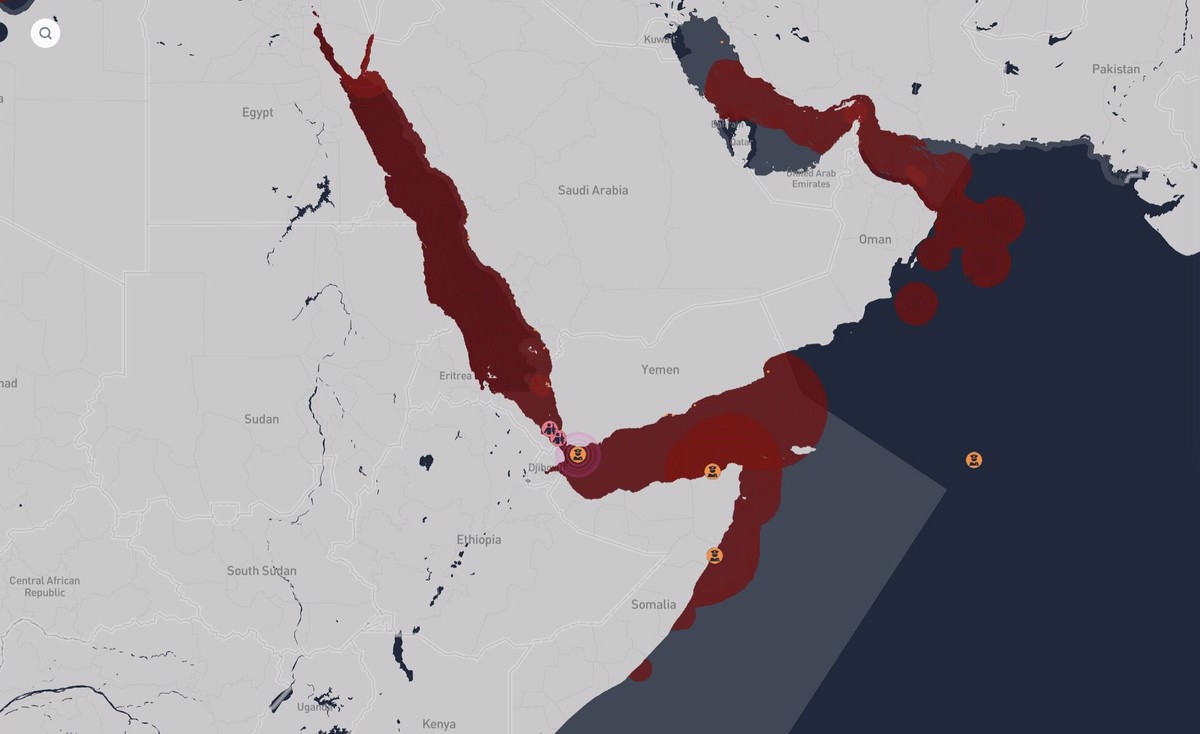Rerouting and Red Sea war-risk premiums to drive up freight costs – Vortexa
Sustained Houthi attacks on vessels sailing in the Red Sea will increase freight rates substantially, predicts Vortexa’s Jay Maroo.
 MAP: Incident sites of vessel attacks and captures around the Red Sea region as of 20 December. LinkedIn of Joshua Hutchinson, Ambrey Analytics
MAP: Incident sites of vessel attacks and captures around the Red Sea region as of 20 December. LinkedIn of Joshua Hutchinson, Ambrey Analytics
Rising war-risk premiums have put upward pressure on freight rates, according to Maroo, Vortexa's head of market intelligence and analysis.
War-risk premiums are additional surcharges shipping companies must pay when purchasing war insurance for their vessels. War insurance provides “cover for damage due to acts of war", which is normally excluded from other marine insurance policies, according to The Swedish P&I Club of marine insurers. This includes terrorist attacks, hijacking and missile attacks among others.
Several shipping companies have halted operations in the Red Sea or rerouted their vessels to avoid the area in response to the recent Houthi attacks, a statement from the International Union of Marine Insurers (IUMI) said.
“This means the provision of hull and cargo insurance has become increasingly challenging due to the heightened risk,” IUMI noted.
“As insurers, we are continuously assessing the situation to ensure adequate coverage and support for our clients, while also advocating for enhanced safety measures," it said.
According to Reuters, war risk premiums have risen to 0.5-0.7% of a ship's value, up from 0.07% in December, causing seven-day voyages to cost thousands more.
The Joint War Committee of Lloyd's Market Association and International Underwriting Association has expanded the high-risk zone in the Red Sea from 15° north to 18° north, Reuters reports. It has also widened the high-risk zone near Eritrea, an African country on the Red Sea coast, in preparation for missile strikes.
An S&P Global report cited a market source that war risk premiums for an average Aframax shot up from $30,000 to $100,000 on 13 December, following a period of heightened concerns.
Yemen’s Houthi rebel group hijacked the vehicle carrier Galaxy Leader on 19 November, threatening commercial shipping in the Red Sea. A missile then struck the bulk carrier Unity Explorer on 3 December.
At least 15 vessels have been struck by missiles, nearly been hit or been threatened by the Houthis since the beginning of the month, according to marine risk management firm Ambrey.
Round the Cape for safe passage
Many of the world's biggest shipping firms have announced that they will divert their vessels away from the Red Sea to avoid getting attacked. They include the container shipping firms Maersk, MSC, CMA CGM, Hapag-Lloyd, Evergreen, Yang Ming, HMM and ONE, and as well as Frontline, Euronav, CMB, Wallenius Wilhelmsen, Equinor and BP.
Voyages between Asia and Europe can be extended by 14-24 days if vessels avoid the Suez Canal route, and this will push freight costs higher, according to Vortexa's Maroo.
“The extra mileage generated would both increase vessel tonnage requirements but would also increase the bunker consumption for operating vessels on both the laden and the ballast legs, hence also resulting in increased freight costs,” he said.
Some vessels are being rerouted around the Cape of Good Hope, but the majority are still sailing through the Red Sea, Kpler's lead freight analyst Matthew Wright told ENGINE yesterday.
However, more shipowners are likely to opt for the longer Cape route if the Houthi attacks persist or escalate.
By Konica Bhatt
Please get in touch with comments or additional info to news@engine.online





